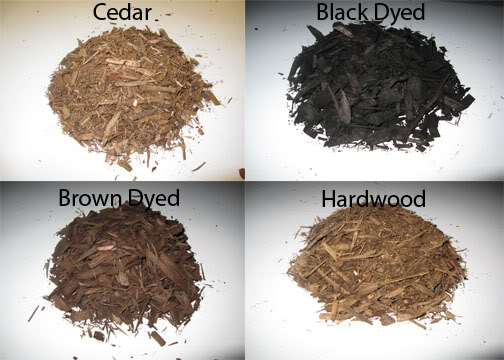The Good, Bad and In-Between of Mulch
Everyone likes free stuff. Who doesn’t want something for free?
“Free” doesn’t always mean “good,” though. Mulch is a prime example.
As we explained in our last post, the free mulch you get at your municipal recycling center is often poor quality. It’s made from yard waste. No quality standards apply. Weeds, diseases and unwanted seeds can lurk within. Using this mulch on planting beds can lead to unexpected problems later … and more work and expense.
What are the other mulch alternatives in Brookfield, Elm Grove and New Berlin, WI?
Let’s start with the best: natural hardwoods. These mulches add nitrogen to soil as they decay, providing a vital nutrient for plants. You’ll have to buy from a garden store (read labels on the bags to be sure it’s hardwood) or a professional landscaper. They might be the most expensive option, too. Quality has a price.

Colored mulches, often called “enviro-mulch,” are made from ground-up pallets. The pallets are pine, so the mulch makes soil more acidic. Chemical dyes bring the color.
Hemlock and cedar mulches also add acid as they decay. If you aren’t sure of the type(s) of wood used in a mulch, ask the vendor.
Here’s why it’s important: Changing pH levels in soil greatly affects growing conditions. Species such as evergreens, oaks, dogwoods, yews, boxwoods and Lily-of-the-Valley prefer acidic soil. Other species don’t do as well. This is meaningful for planning new plantings, or understanding how existing greenery could be affected.
If you like the look of colored mulch, consider putting a base of hardwood mulch directly on top of soil, then the colored material on top. You’ll have the best benefits of both.
Rubber mulch lasts the longest. The drawback, obviously, is that it adds no nutrients to soil. It’s a purely aesthetic option. Its moisture retention is minimal, too.
Mulch is an easy, fast addition that makes planting beds more attractive and healthy. Not all mulches are alike, though. You really do get what you pay for. Know the differences, and understand what “free” might really cost in the long run.
<<-- Back to List
Email to a friend